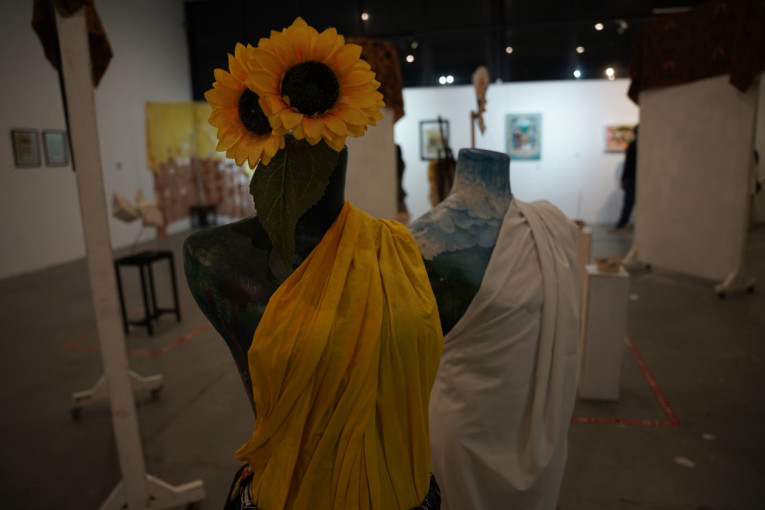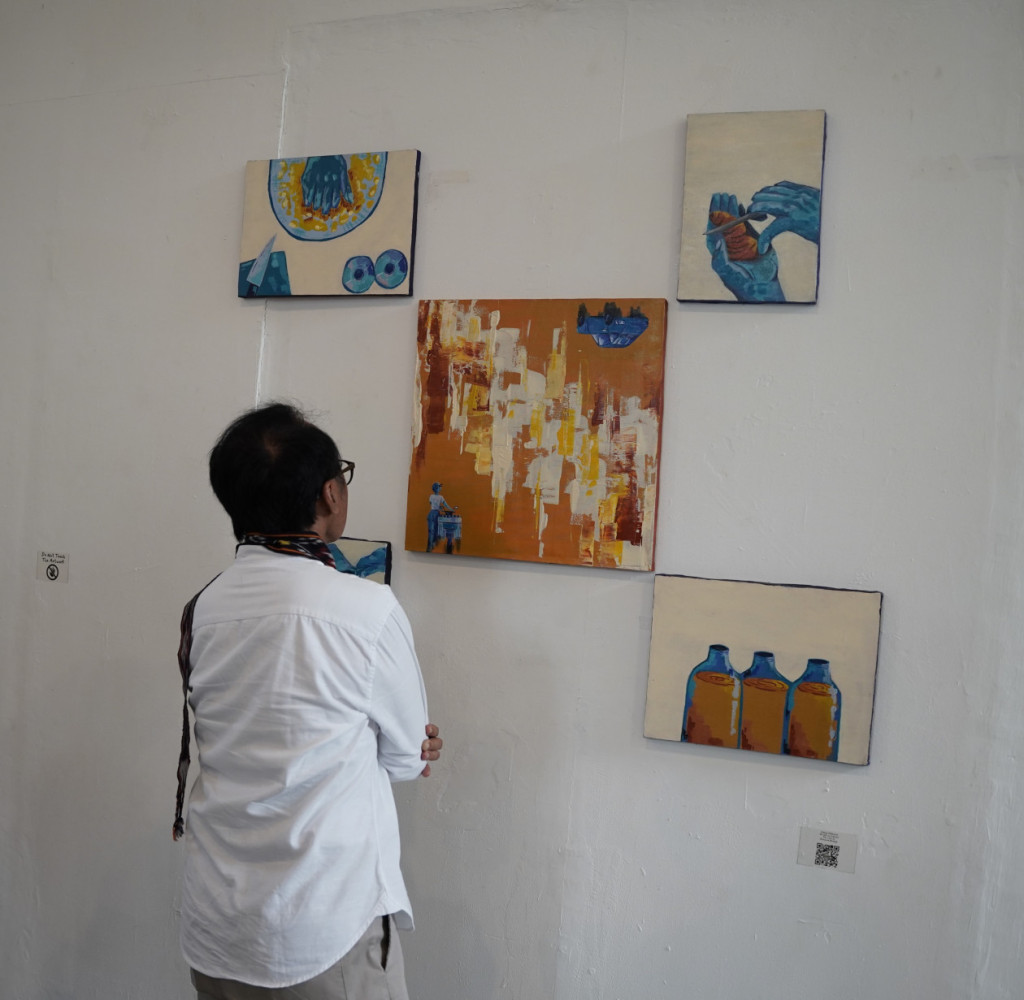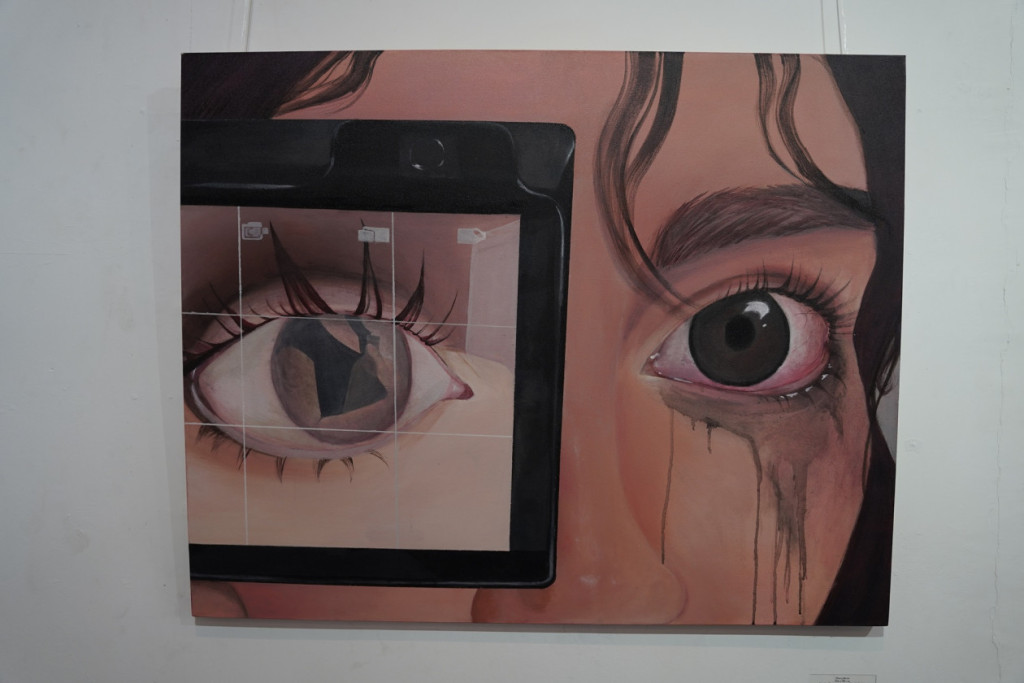
Jamu is an indigenous Indonesian tradition that has existed for many years. It is an herbal drink made from various spices that is known to promote health and cure illnesses.
Today, UNESCO recognizes Jamu as an intangible cultural heritage. Unfortunately, there is a growing lack of awareness among the public about its potential as a development beyond just a healthy drink.
In response, a group of artists from various regions gathered to hold an art exhibition themed around Jamu, the ‘Jejamuan Art Project,’ aimed at raising public awareness about Jamu’s development in the arts sector.
The exhibition, organized by UGM’s visual arts unit, opened on Thursday (Oct. 17) and runs until Tuesday (Oct. 22) at The Ratan Art Space, Yogyakarta.

This exhibition features around 23 pieces of art. Some of them include Stevy Noza’s Fears, Weakness, Hopes, Umi Jari Widayah’s New Era of Jamu as Lifestyle with an Urban Touch, and Zia Esha Azhari Muzafar Shidiq’s The Burden of Ibuism.
These artworks offer unique interpretations to visitors of the current state of the Jamu tradition.
In the painting Fears, Weakness, Hopes, Stevy Noza illustrates the confusion among modern Indonesians regarding Jamu.
Should it be left behind, or should it continue to be developed? Additionally, this painting depicts a bottle of Jamu cradled inside an eye like a child.
Noza, the painter, explains that this symbolizes the hope that Indonesians will always cherish and embrace Jamu as they would their child.
“The eye captured in the painting represents the hope that Jamu will continue to be loved and cared for as one would a child,” Noza elaborated in the description of his work.
Meanwhile, in the painting New Era of Jamu as Lifestyle with an Urban Touch, Umi Jari Widayah explains that there is potential and creative opportunity in renewing the traditional practice of Jamu drinking through collaboration with urban culture, creating a healthier generation by promoting Jamu.
Next, in the mixed-media piece The Burden of Ibuism, Zia Esha Azhari Muzafar Shidiq critiques the current state, in which women are positioned as the main custodians of the Jamu tradition, responsible for making, selling, and preserving the knowledge of Jamu.
This dynamic limits women’s freedom, forcing them to bear this role without the equal involvement of men.
Shidiq delves deeper, explaining that using two mannequins in the artwork represents this injustice. The female mannequin is adorned with fabric patterned with Jamu and warm colors, symbolizing the pressure on women to preserve the culture.
Meanwhile, the male mannequin, dressed in a “blank” white shirt, represents the lack of male involvement in preserving Jamu culture.
According to her, within the context of Jamu tradition, women are often burdened with the primary responsibility, whether as makers, sellers, or preservers of knowledge about Jamu.
This piece aims to show that the burden is not just a cultural role but also a form of social pressure that limits women’s space.
“Women are forced to continue bearing this role without involving men equally,” Shidiq explained in her work’s description.

All the pieces in this exhibition express the artists’ perspectives on the challenges faced by Jamu artisans today and their hopes for the future development and preservation of Jamu.
The hope is that this festival will raise public awareness of the importance of preserving Jamu as one of our intangible cultural products.
The head of UGM’s visual arts unit, Dr. Ahmad Syaify, appreciated the organizers’ invitation to collaborate with the UGM Visual Arts Unit in this art exhibition.
One of the event organizers, M. Yusril Mirza, explained that before creating their art, the artists visited Gesikan village in Merdikorejo, Sleman Regency.
There, they were introduced to Jamu artisans to gain a deeper understanding of Jamu, allowing them to create artworks reflecting their experiences with the artisans.
“Conceptually, it’s called Meet, Understand, Express. So, we meet Jamu artisans, visit Gesikan village in Sleman, and then understand. Understanding means getting to know the artisans, their dynamics, the process of making Jamu, the issues they face, and then expressing it through an artwork,” he explained.
Author: Hanif
Editor: Gusti Grehenson
Post-editor: Afif

